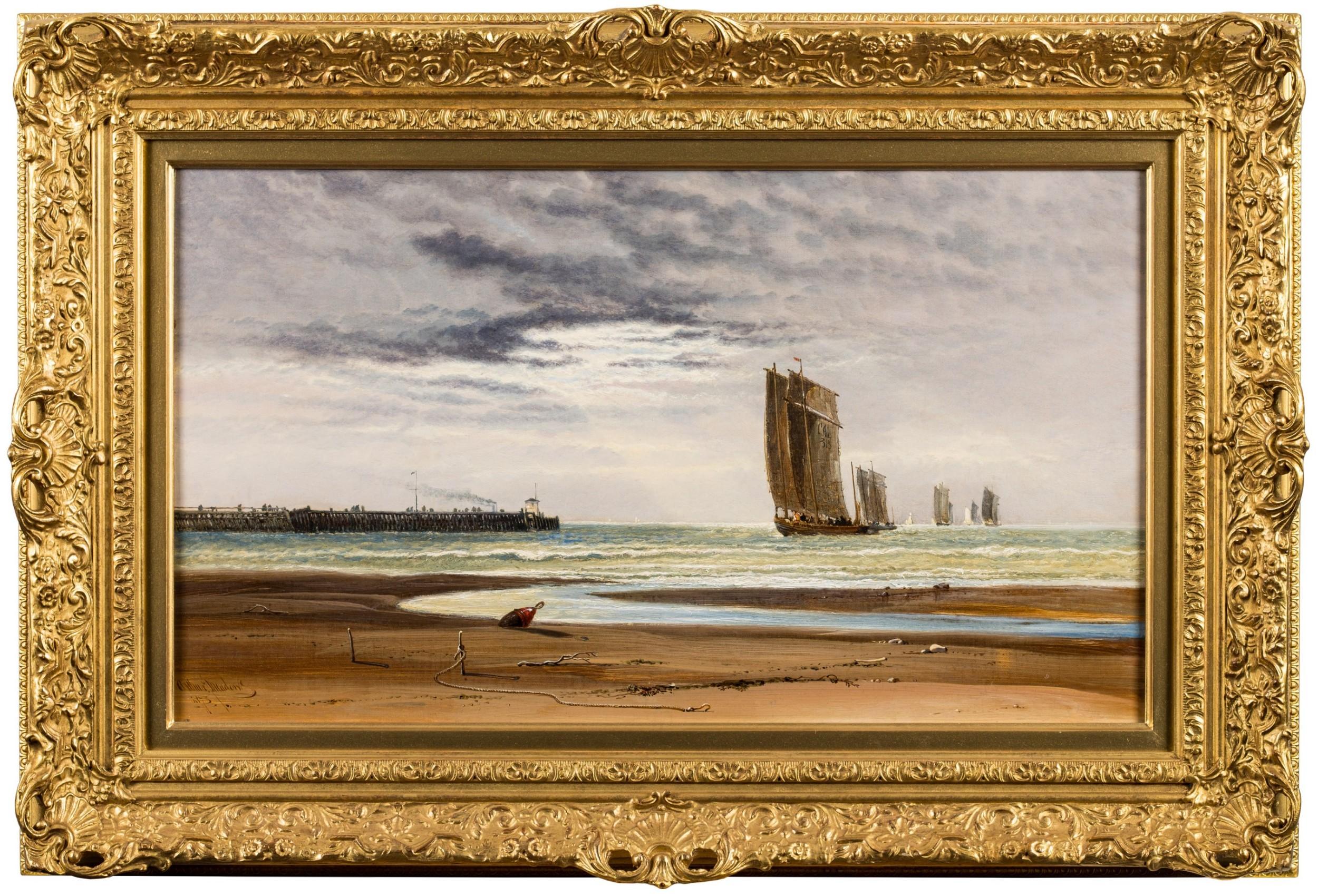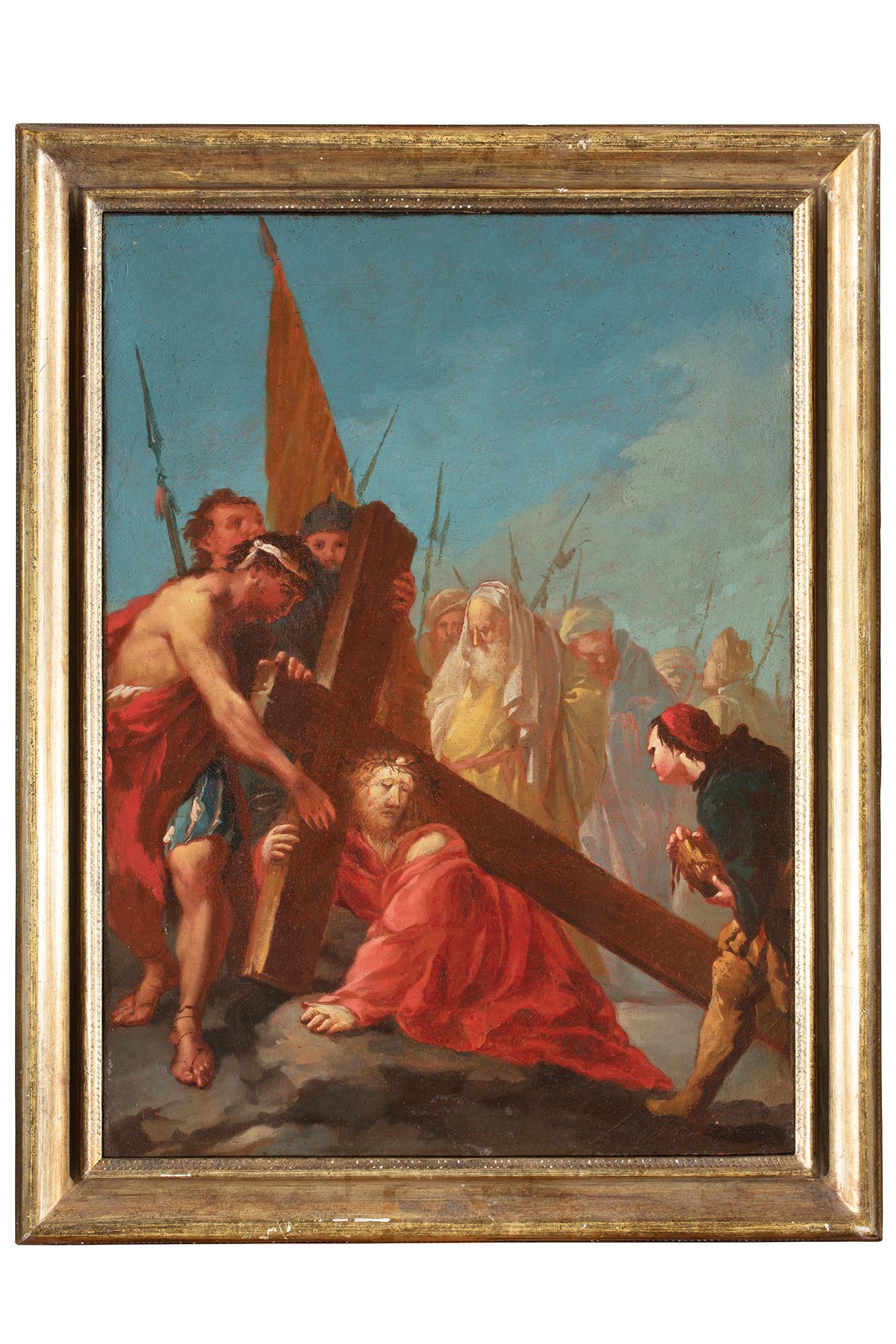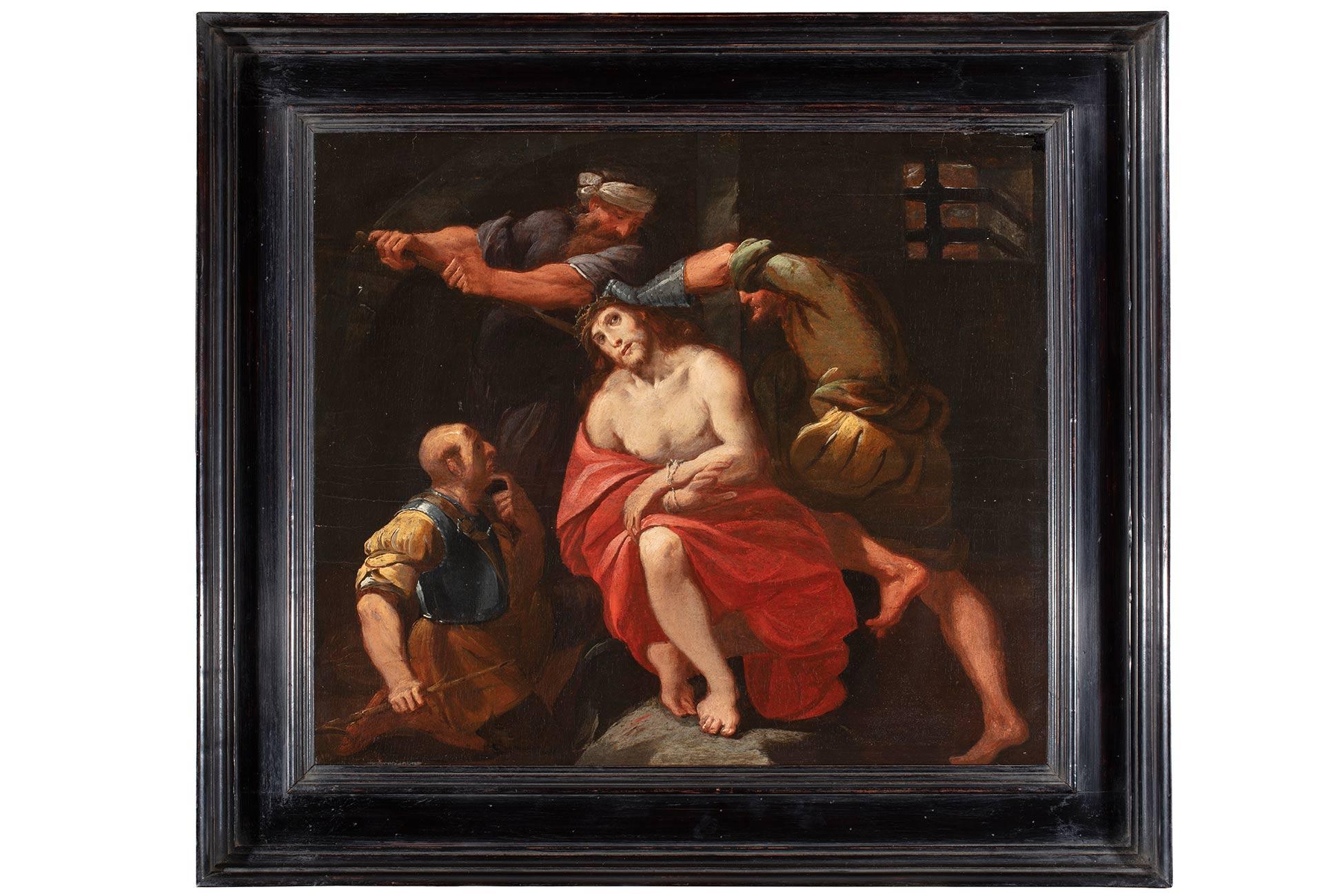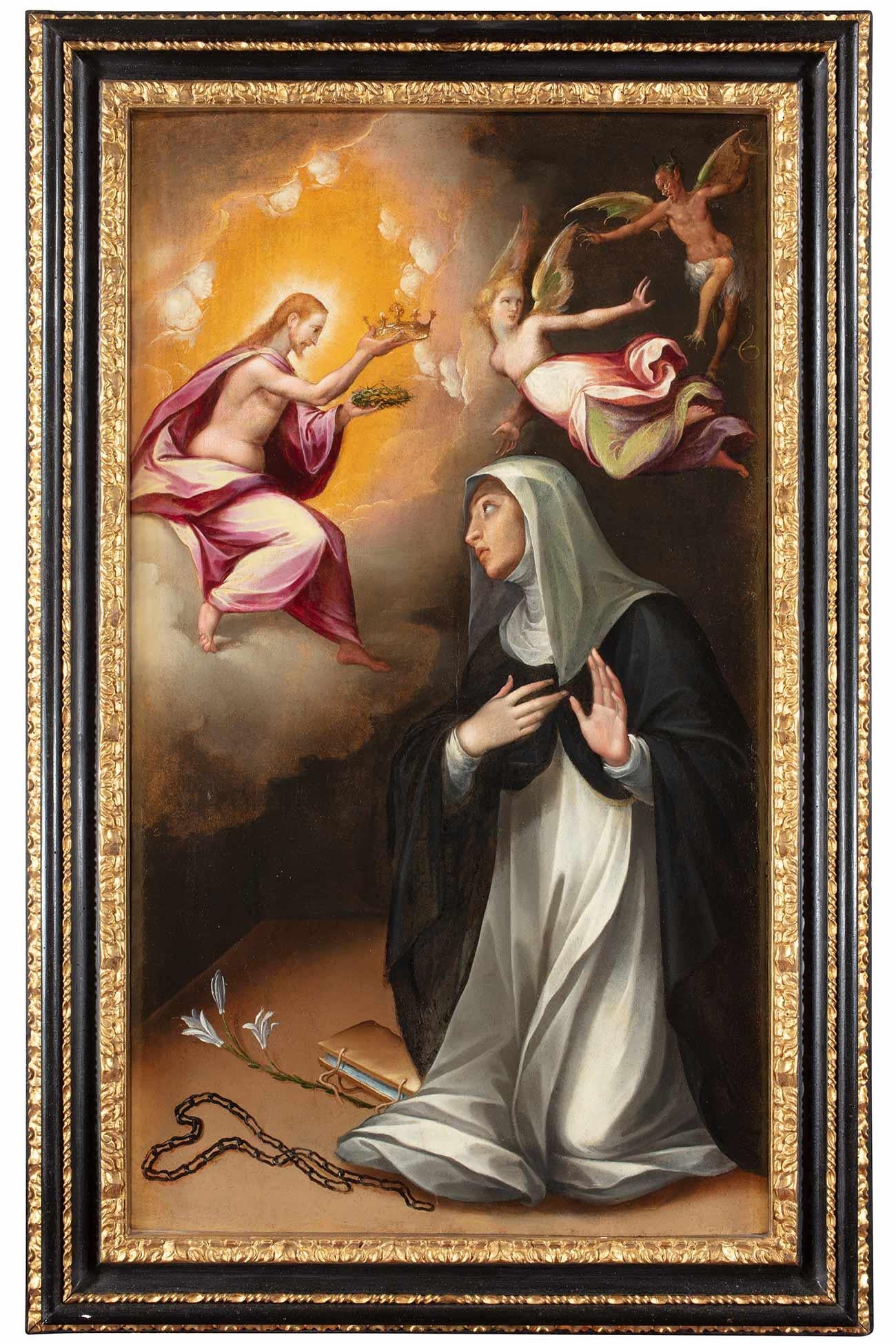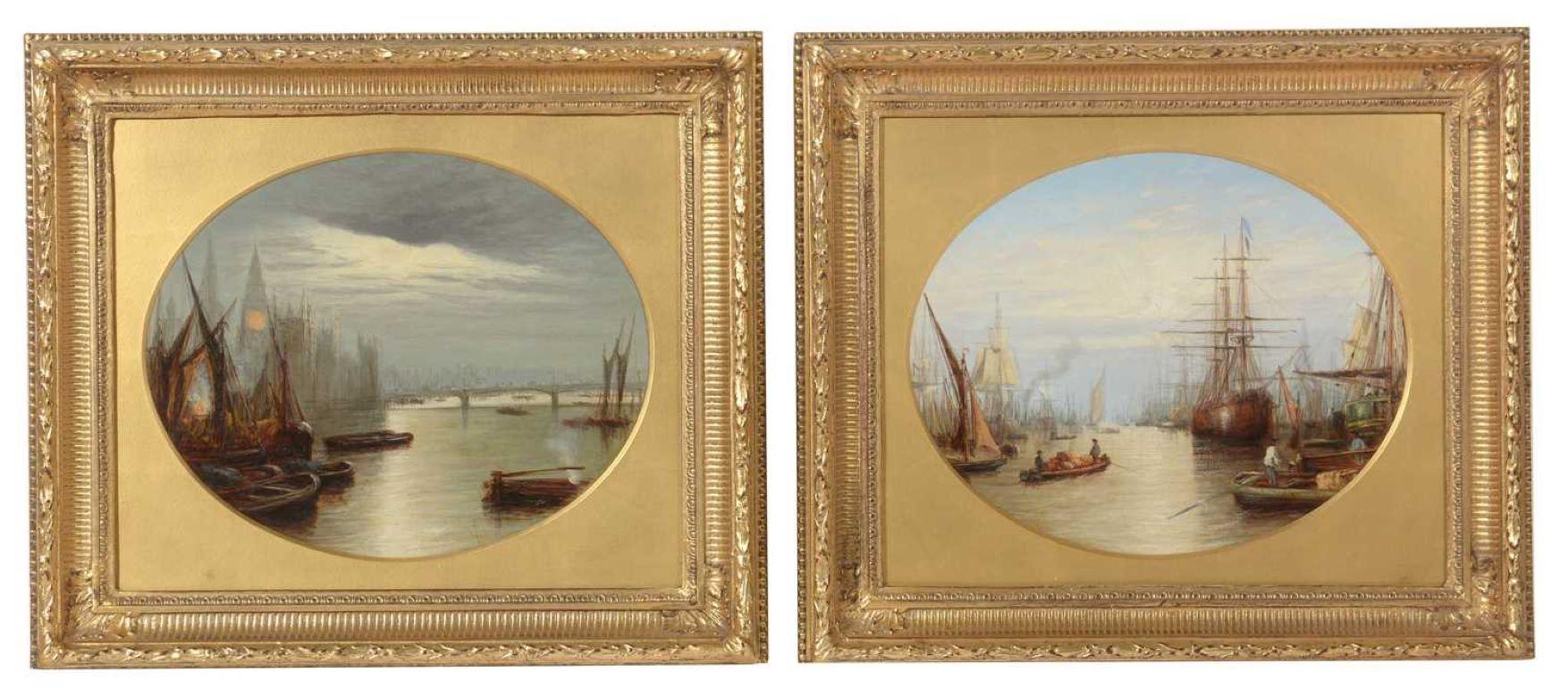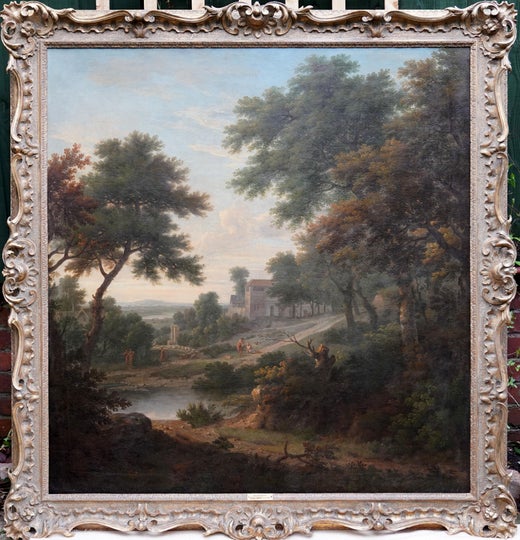George LambertManor House with Cottages - British 18thC Old Master art oil painting VG prov.1744
1744
About the Item
- Creator:George Lambert (1700 - 1765, British)
- Creation Year:1744
- Dimensions:Height: 64 in (162.56 cm)Width: 62 in (157.48 cm)Depth: 2 in (5.08 cm)
- Medium:
- Movement & Style:
- Period:
- Condition:
- Gallery Location:London, GB
- Reference Number:1stDibs: LU853113173322
George Lambert
George Lambert was an English artist born in 1700. He divided his career equally between the theatre scene painting and landscape painting professions. For most of his life, he lived in Covent Garden, London. His early style of the 1720s is similar to that of John Wootton. However, his later classical landscapes earned him the accolade the father of English landscape and the English Poussin. Lambert painted the landscape backgrounds for William Hogarth’s paintings, The Pool of Bethesda and The Good Samaritan, made for St Bartholomew’s Hospital (1736–37). In 1761, he was elected chairman of the newly founded Society of Artists of Great Britain. The Society received the Royal Seal on 26th January 1765 and just five days later Lambert died at his home in Covent Garden, leaving his possessions to his servant, Ann Terry.
- ShippingRetrieving quote...Ships From: London, United Kingdom
- Return PolicyA return for this item may be initiated within 14 days of delivery.
- Wooded Landscape with Diana Hunting - 17thC Old Master French art oil paintingBy Jean François MilletLocated in London, GBA original large French Old Master oil on canvas which is by Millet (1642-1679) and was painted circa 1675. This large canvas is in good clean condition and depicts a wooded landscap...Category
17th Century Old Masters Landscape Paintings
MaterialsOil
- Travellers near Ruins in a Landscape - Dutch Old Master art figural oil paintingBy Pieter WouwermanLocated in London, GBThis lovely Dutch Old Master oil painting is attributed to artist Pieter Wouwerman. Painted circa 1660 it is figurative landscape with horseback travellers and their dogs in the foreground approaching ruins on their left. Beyond is a river snakes through the landscape, beneath the fading light of approaching dusk. There are some superb details making this an excellent Dutch Golden Age oil painting...Category
Mid-17th Century Old Masters Landscape Paintings
MaterialsOil
- Peacock and Birds in a Landscape - British 17thC Old Master animal oil paintingBy Marmaduke CradockLocated in London, GBThis stunning British Old Master oil painting is attributed to circle of noted bird painter Marmaduke Cradock. Painted circa 1690 it is an excellent example and the sort of collection of birds he loved to paint - a peacock, wild turkeys, a jay in the foreground and doves, all set in a beautiful landscape. A variant of this painting is now in The Tate collection. Unlike many artists, he preferred to paint live birds with all their passions, joys and quarrels. The artist has perfectly capture the dynamics between this group, especially the dove and jay, as they all begin to settle down in the twilight. The colouring and brushwork are superb making this a fantastic British Old Master bird oil painting in a stunning carved gilt frame. Provenance. London estate. Condition. Oil on canvas, 42 inches by 39 inches and in good condition. Frame. Housed in a magnificent complementary period carved and gilded frame, 50 inches by 47 inches and in good condition. Marmaduke Cradock (1660-1716) was an English painter of birds and animals. Some older sources give his first name as Luke. Cradock was an English painter, noted for his depictions of birds, dead game, and other animals. He was born in Somerton, Somerset and moved to London, where he served an apprenticeship to a house-painter. He was, however, self-taught as an artist, becoming skilled in the depiction of birds and animals. Horace Walpole wrote that "I have seen some pieces by his hand which he painted with a freedom and a fire that entitled them to more distinction". According to Walpole, Cradock deliberately shunned aristocratic patronage. He worked in general by the day, and for dealers who retailed his works; possessing that conscious dignity of talent which made him hate to be employed by men whose birth and fortune confined his fancy, and restrained his freedom. According to the RKD his work as a still life and bird painter was influenced by Melchior d'Hondecoeter, Peter Frans Casteels, and Jakob Bogdani. Sketches in the collection of the British Museum indicate that he based at least some of the birds in his paintings on drawings from life. He tended to paint domestic birds and common wild species, rather than the exotic varieties favoured by some other artists. He sometimes introduced elements of drama such as attacks by predatory animals into his bird paintings, a feature shared with the works of Francis Barlow...Category
17th Century Old Masters Animal Paintings
MaterialsOil
- Arcadian Italian Landscape - Old Master 17thC French oil painting herdsman sheepBy (Attributed to) Gaspard DughetLocated in London, GBA delicate oil on canvas landscape capriccio of an Arcadian landscape with figures and sheep and goats in the foreground. A stormy sky and blasted tree populate the landscape and the...Category
17th Century Old Masters Landscape Paintings
MaterialsOil
- Shepherd with Animals in Landscape - Dutch Old Master art pastoral oil paintingBy Nicolaes BerchemLocated in London, GBThis lovely Dutch Old Master oil painting is attributed to noted Dutch artist Nicholaes Berchem. Painted circa 1665 it is a charming pastoral scene of a shepherd and his animals including sheep, goats, donkey and cows and of course his trusty dog. They are all resting beneath trees while he looks on attentively. The light in the sky and the light and shadows on the animals is beautiful. A really superb example of Dutch Old Master art with great detail. Provenance. Surrey estate. Christies stamp verso. Condition. Oil on canvas, 38 inches by 32 inches and in good condition. Frame. Housed in a complementary gilt frame, 46 inches by 30 inches and in good condition. Nicolaes Pieterszoon Berchem (1620-1683) was a highly esteemed and prolific Dutch Golden Age painter of pastoral landscapes, populated with mythological or biblical figures, but also of a number of allegories and genre pieces. He was a member of the second generation of "Dutch Italianate landscape" painters. These were artists who travelled to Italy, or aspired to, in order to soak up the romanticism of the country, bringing home sketchbooks full of drawings of classical ruins and pastoral imagery. His paintings, of which he produced an immense number, (Hofstede de Groot claimed around 850, although many are misattributed), were in great demand, as were his 80 etchings and 500 drawings. His landscapes, painted in the Italian style of idealized rural scenes, with hills, mountains, cliffs and trees in a golden dawn are sought after. Berchem also painted inspired and attractive human and animal figures (staffage) in works of other artists, like Allaert van Everdingen, Jan Hackaert, Gerrit Dou, Meindert Hobbema and Willem Schellinks. Born in Haarlem, he received instruction from his father Pieter Claesz, and from the painters Jan van Goyen, Pieter de Grebber, Jan Baptist Weenix, Jan Wils and Claes Cornelisz. Moeyaert. According to Houbraken, Carel de Moor told him that Berchem got his name from two words "Berg hem" for "Save him!", an expression used by his fellows in Van Goyen's workshop whenever his father chased him there with the intent to beat him. No trip or Grand Tour by Berchem was documented by Houbraken though he mentioned another story about the "Berg hem!" nickname which came from Berchem's conscription as a sailor; the man in charge of impressment knew him and sent him ashore with the words "Save him!". Today his name is assumed to come from his father's hometown of Berchem, Antwerp. According to the RKD he traveled to Italy with Jan Baptist Weenix, whom he called his cousin, in 1642–5. Works by him are signed both as "CBerghem" and "Berchem". In 1645 he became a member of the Dutch reformed church and married the year after. According to Houbraken he married the daughter of the painter Jan Wils, who kept him on a short allowance, but to finance his collection of prints he would borrow money from his pupils and colleagues and pay them back from the proceeds of paintings that he didn't tell her about. Around 1650 he travelled to Westphalia with Jacob van Ruisdael, where a dated piece showing Burg Bentheim is recorded. Maybe Berchem went to Italy after this trip and before he moved to Amsterdam - he is not clearly documented in the Netherlands between 1650 and 1656. Around 1660 he worked for the engraver Jan de Visscher designing an atlas. In 1661-1670 he is registered in Amsterdam and in 1670 he moved back to Haarlem, but was living back in Amsterdam by 1677, where he died in 1683. He was a popular teacher and his pupils were Abraham Begeyn, Johannes van der Bent, his son Nicolaes, Isaack Croonenbergh, Simon Dubois, Karel Dujardin, Johannes Glauber, Pieter de Hooch, Jacob van Huchtenburg, Justus van Huysum...Category
17th Century Old Masters Landscape Paintings
MaterialsOil
- Tivoli Waterfall through Ponte Lupo - British Old Master landscape oil paintingLocated in London, GBThis superb exhibited British 18th century Old Master Italian landscape oil painting is by noted artist Thomas Barker of Bath. Painted in 1794 and exhibited at the Royal Academy in 1...Category
18th Century Old Masters Landscape Paintings
MaterialsOil
- Arthur Joseph Meadows 19th Century Seascape Off CalaisBy Arthur Joseph MeadowsLocated in York, GBA very fine painting by the renowned seascape painter Arthur Joseph Meadows,Off Calais; fishing fleet returning at low tide. Housed in an antique style gilt frame the size overall is...Category
19th Century Old Masters Landscape Paintings
MaterialsOil
- 19th Century By Giustino Menescardi Ascent to Calvary Oil on CanvasLocated in Milano, LombardiaGiustino Menescardi (Milan, c. 1720 - Venice, after 1779) Ascent of Calvary Oil on canvas, cm. 47 x 36 - with frame cm. 57x43 Shaped and gilded wooden cassetta frame Publications: Bozzetti, modelletti, sketches: dalla collezione di Giorgio Baratti...Category
Early 18th Century Old Masters Landscape Paintings
MaterialsCotton Canvas, Canvas, Oil
- 17th Century by Simone Cantarini Adoration of The Magi Painting Oil on CanvasLocated in Milano, LombardiaSimone Cantarini (Pesaro 1612 - Verona 1648) Adoration of the Magi Oil on paper applied to canvas, cm. 16,5 x 24 – with frame cm. 22 x 29 Antique sh...Category
Early 17th Century Old Masters Figurative Paintings
MaterialsCanvas, Cotton Canvas, Oil
- 17th Century by Giovan Battista Discepoli Coronation of Thorns Oil on PanelLocated in Milano, LombardiaGiovan Battista Discepoli, called the Zoppo from Lugano [Castagnola (Lugano) 1590 - Lugano 1654] Coronation of Thorns Oil on panel, cm. 34.2x39.5 – with frame cm. 46x52 Shaped and ...Category
Early 17th Century Old Masters Landscape Paintings
MaterialsOil, Panel
- 16th Century by Cristofano Roncalli Saint Catherine of Siena Oil on CanvasLocated in Milano, LombardiaCristofano Roncalli (Pomarance 1552 - Rome 1626) Saint Catherine of Siena chooses the crown of thorns oil on wood, cm. 101,5x59.5 - with frame cm. 120x76 Shaped, carved and sculpted wooden cassetta frame, partly gilded and partly ebonized wood Expertise: Marco Ciampolini The marvellous scene that opens before our eyes is that of Christ's apparition to Saint Catherine of Siena; she must choose between a golden crown, the symbol of earthly royalty, and a crown of thorns, the symbol of virtuous Christian sacrifice. Catherine does not hesitate to choose the crown of thorns, her life in imitation of...Category
16th Century Old Masters Landscape Paintings
MaterialsCanvas, Cotton Canvas, Oil
- 19th century oil, view London, the Thames, houses parliament, Francis MaltinoLocated in York, GBA fine pair of oil paintings, oil on board depicting views of the Thames one showing houses of parliament the other barges in busy shipping lane. Framed and Glazed the size being 26 ...Category
19th Century Old Masters Landscape Paintings
MaterialsOil
